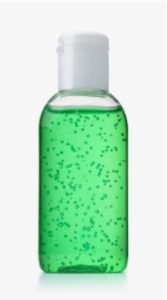 The Centers for Disease Control and Prevention (CDC) recommends washing hands with soap and water whenever possible because handwashing reduces the amounts of all types of germs and chemicals on hands. But if soap and water are not available, using a hand sanitizer with at least 60% alcohol can help you avoid getting sick and spreading germs to others.
The Centers for Disease Control and Prevention (CDC) recommends washing hands with soap and water whenever possible because handwashing reduces the amounts of all types of germs and chemicals on hands. But if soap and water are not available, using a hand sanitizer with at least 60% alcohol can help you avoid getting sick and spreading germs to others.
Sanitizers Do Not Eliminate All Types of Germs
Why? Hand sanitizers can inactivate many types of microbes very effectively when used correctly, BUT PEOPLE may not use a large enough volume of sanitizer to get the job done or they wipe it off before it has a chance to dry.
Also, hand sanitizer may not work well on greasy or visibly dirty or heavily soiled hands.
Remember, alcohol-based hand sanitizers can increase the probability of harmful chemicals entering your body. One CDC study reported that people using hand sanitizer to clean hands had increased levels of pesticides in their bodies from touching harmful chemicals.
If Soap and Water Are Not Available…
Use an alcohol-based hand sanitizer that contains at least 60% alcohol.
Why? Many studies have found that sanitizers with an alcohol concentration between 60-95% are more effective at killing germs than those with a lower alcohol concentration or non-alcohol-based hand sanitizer.
Remember, When Using Hand Sanitizer…
Apply the product to the palm of one hand (read the label to learn the correct amount) and rub the product all over the surfaces of your hands until your hands are dry.
IF YOU CAN’T WASH WITH SOAP…USE AT LEAST 60% ALCOHOL-BASED HAND SANITIZER!
Download flyer: STOTW_1045_HandSanitizer_ShowMeTheScience Download Spanish flyer: STOTW_1045_HandSanitizer_ShowMeTheScience_esp

